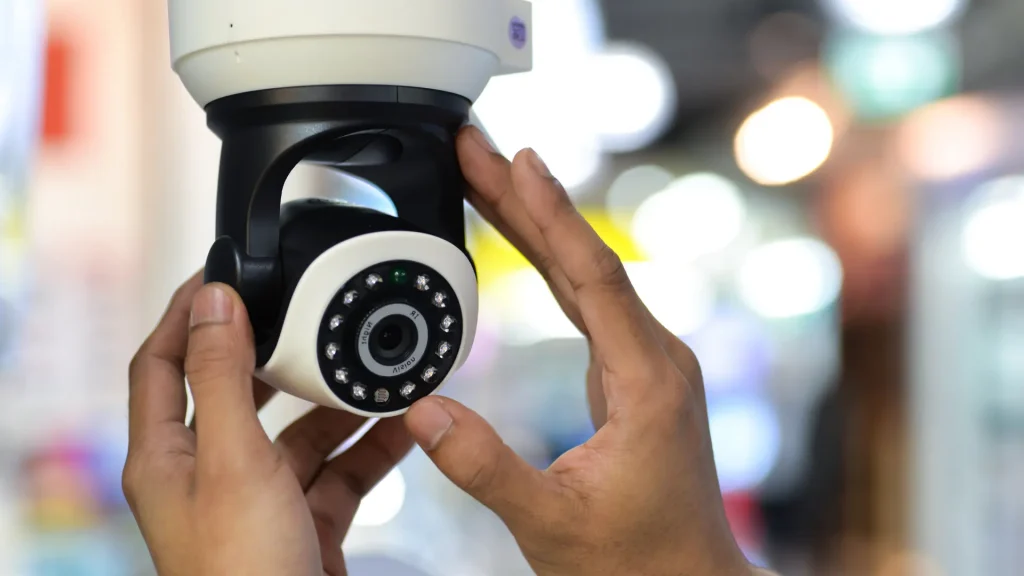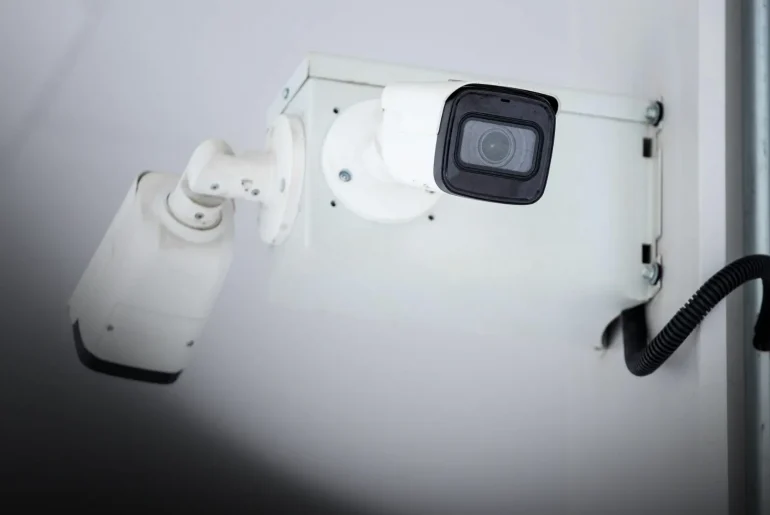IP Camera Market 2025–2026: VSaaS Opportunities for Telecoms and System Integrators
The video surveillance industry now serves purposes beyond security because it functions as the central control system for modern interconnected societies. The IP camera market advances toward becoming an intelligent cloud-based system which combines video surveillance with retail analytics and smart manufacturing and city-wide safety networks. Telecom operators face a rare business opportunity through Video Surveillance as a Service (VSaaS) because this model enables them to generate substantial recurring revenue from their connectivity services.
Recent market analyses estimate the global IP camera market at USD 5.2 billion in 2024, projected to reach USD 16.4 billion by 2033 at a 13.6% CAGR. Shipment volumes exceeded 132 million units in 2024, signaling explosive demand for networked and AI-powered visual solutions. The foundations are in place, so that the telecoms and ISPs are uniquely positioned to own the next layer.
The Global Market Landscape
Multiple independent sources predict IP and network cameras will experience double-digit annual growth throughout the 2030s. The global market for IP-based systems will experience continuous growth during 2024-2026 because organizations and public institutions and residential customers replace their outdated CCTV systems with modern IP technology.
The early 2025 market shows more than 1.2 billion connected cameras in operation which demonstrates how intelligent video technology has spread across all industries. The market transition from hardware product sales to service-oriented revenue streams has started through VSaaS solutions which deliver storage services with analytical capabilities and cloud infrastructure management.
- Cloud adoption has surged. 22% of global camera sales in 2024 were cloud-managed (up from 15% in 2021).
- AI Video features are becoming standard and common-used. 45% of new commercial deployments include facial recognition or object tracking.
- Edge processing now powers 42% of enterprise cameras, bringing real-time analytics closer to the data source.
Together, these trends redefine surveillance as a digital service ecosystem, and IP Camera is the main determination of the traditional monitoring transformation.
The rapid expansion of the IP camera market represents a fundamental technological shift in how the world captures and interprets visual data. With market growth across Asia, Europe, and the Americas, the role of the IP camera is evolving from a simple recording device into a smart, networked node within the global digital infrastructure.
What an IP Camera Really Is
An IP (Internet Protocol) camera (IP Camera) is a digital imaging device that transmits video over standard IP networks instead of closed analog systems.
Unlike legacy CCTV, IP cameras encode, store, and send footage as data, allowing remote access, automation, and integration with cloud and CPU AI platforms. All they form the foundation of intelligent surveillance development for not just watching, but understanding, alerting and even predicting.
Regional Momentum and Trade Dynamics
The IP camera market’s growth is global but uneven, reflecting different adoption curves and import dependencies.
| Region | 2024 Market Share | Highlights |
| Asia-Pacific | 45% (59.6 M units) | China leads (30.4 M units) followed by India (7.8 M). 68% of units AI-enabled; smart-city networks in 38 cities. |
| North America | 25% (33.1 M units) | 31% of cameras are already cloud-managed; strong uptake in retail and healthcare. |
| Europe | 20% (26.5 M units) | 43% adopted cloud-managed systems; major investment in border and transport surveillance. |
| Middle East & Africa | 10% (12.5 M units) | 4.9 M edge-analytics cameras deployed; growth driven by smart cities and mining. |
The trade data shows that Peru and Chile and Kazakhstan and Uzbekistan and Colombia ranked as the top five mid-sized importers during 2024–2025. China leads export activities while Taiwan and Vietnam support its position as the leading exporter. The worldwide market trend indicates that multiple small nations have started participating in the connected surveillance wave which creates an attractive market for telecom service providers.
Technology Drivers Creating VSaaS Tailwinds
The hardware transition to IP is already complete. All we see now is the battle moves to software, AI, and cloud services. These trends are rapidly expanding the VSaaS opportunity for telecom operators, ISPs, and system integrators seeking new, diversified revenue streams.
- Cybersecurity-Ready Hardware. 78% of new cameras ship with secure boot and encrypted firmware, allowing telcos to bundle managed security layers.
- Open Standards & Interoperability. Over 90% support ONVIF standards, enabling multi-vendor ecosystems, which are ideal for carrier-grade service integration.
- Wireless & 5G Growth. 68% of residential cameras are wireless, directly complementing 5G and FTTH deployments.
- Smart-Home Convergence. Average camera prices dropped 12% to USD 85, driving mass adoption and subscription-based consumer models.
- Bandwidth Hunger. Each HD camera demands roughly 3 Mbps, precisely the kind of traffic telcos are best equipped to handle.
- Edge Analytics Expansion. Over 40 million cameras shipped with embedded AI accelerators, pushing demand for low-latency, edge-connected VSaaS platforms like Aipix.
The network faces a perfect storm because telecom operators must handle cloudified applications that need bandwidth and security features and run directly on their network infrastructure.

Why Telecom Operators Are the Natural VSaaS Enablers
Telecom operators already possess the three pillars that VSaaS requires:
- Connectivity and Low Latency. 5G and FTTH networks provide the throughput for continuous video streaming.
- Cloud and Edge Infrastructure. Existing telco clouds can host video storage, analytics.
- Customer Trust and Scale. Decades of managing enterprise-grade connectivity give telcos credibility in data-sensitive applications.
Operators can establish a recurring business model through analytics-driven services by uniting these assets. The VSaaS model enables operators to generate subscription-based revenue through per-camera/ per-site/ per-analytic pricing which matches existing telecom billing systems.
The connection of one million cameras creates an annual revenue stream of USD 40–60 million which exceeds the value of basic connectivity services.
Monetization Paths and Sectoral Insight
Which business sectors have a strong tradition in video surveillance, and who are the primary consumers of IP cameras?
In 2024, the commercial and residential sectors represented 65% of IP camera installations, mirroring telcos’ core B2B and B2C footprints.
| Sector | Share of Units (2024) | VSaaS Monetization Levers |
| Residential | 30% (39.7 M) | Cloud recording tiers, smart-home bundles, AI notifications |
| Commercial | 35% (46.3 M) | Retail analytics, footfall heatmaps, SLA-based monitoring |
| Manufacturing | 20% (26.5 M) | Predictive maintenance, compliance logging |
| Public & Government | 15% (19.9 M) | Smart-city feeds, law-enforcement networks, fiber backhaul |
With cities such as Dubai, Singapore, and Shenzhen investing in millions of connected cameras for smart infrastructure, telcos can partner on edge-hosted VSaaS layers combining bandwidth, compute, and analytics.
Strategic Outlook in 2026 IP Camera and Video Surveillance Trends
In 2026,there will be three structural shifts will define the market trajectory predicted:
- Cloud-First Surveillance. Enterprise surveys show over 90% of security leaders planning cloud adoption within 12 months, VSaaS growth could outpace hardware CAGR by 2–3×.
- AI at the Edge. Cameras will evolve from passive sensors to distributed compute nodes. Telecom edge infrastructure becomes indispensable.
- Regulatory Localization. Data-sovereignty concerns will push governments and enterprises toward regional cloud partners, which is a key advantage for domestic telecom operators.
Delaying entry means losing strategic ground to cloud-native video analytics providers and OTT entrants. The ecosystem is moving fast and telecoms must lead, not follow.
Why Aipix Is Raising the Telecom and ISPs VSaaS Flag Now
Aipix exists to assist telecommunications companies identify and implement new technologies which will define future connectivity operations.

We highlight the IP camera and VSaaS sector because it embodies the future of telecom monetization:
- Recurring Revenue, Not Just Data Plans
VSaaS operates through subscription models which charge customers based on the number of cameras and analytics features and sites they need. The service potential of VSaaS reaches millions annually because smart-city projects typically deploy more than 8,000 cameras. The service enables telcos to transition from traditional bandwidth pricing to new revenue streams. - Edge Cloud Leverage
Telecom edge infrastructure is already built. VSaaS provides the perfect workload to fill it. Edge analytics, AI inference, and low-latency storage can all be delivered as managed services. - Customer Proximity & Trust
Telecom operators already manage secure networks and compliance for government and enterprise clients. Extending into video services is a natural, credibility-based expansion. - Strategic Control of the Video Layer
Cloud-native startups and OTT players are aggressively targeting VSaaS contracts. If telcos remain passive, they risk losing a critical adjacency to their own networks.
Aipix emphasizes this trend because we see telecom infrastructure as the foundation for intelligent vision systems. So as a result VSaaS is the bridge to that future.
From Data Pipes to Data Intelligence
The existing surveillance backbone of modern society was developed by telecom operators. The video management layer needs to become a part of their ownership. The VSaaS market continues to expand at double-digit rates while AI technology becomes more widespread and organizations worldwide adopt cloud-based management systems.
The market for VSaaS has evolved from a theoretical concept into an essential business requirement. The future of surveillance will emerge from data management and security and analysis capabilities rather than camera sales. The transition of telcos from connectivity services to data intelligence management through VSaaS will create their next major growth opportunity.
Telecom operators and system integrators: the IP camera market is evolving into a service-driven ecosystem. Don’t wait! Get more from your network, edge, and cloud capabilities now to capture this growing VSaaS opportunity and turn connectivity into recurring revenue.
Get your "IP Camera. Export/Import Report. 2025"
Leave your e-mail and we’ll send you the file





